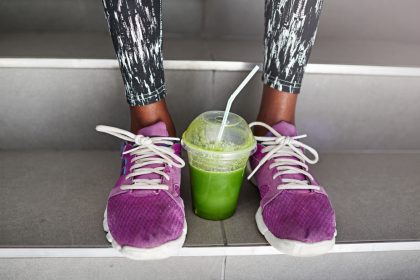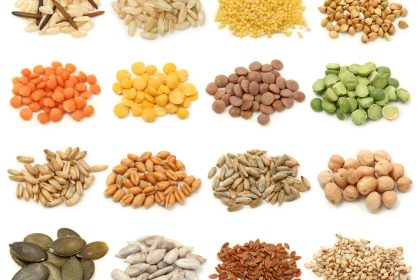You blend up what seems like the perfect healthy breakfast – spinach, banana, berries, almond milk, and maybe some protein powder – feeling virtuous about getting multiple servings of fruits and vegetables in one convenient glass. But here’s what the wellness industry doesn’t want you to realize: that seemingly healthy smoothie might be causing more dramatic blood sugar spikes than a candy bar or soda.
The smoothie myth has become so deeply embedded in health culture that questioning it feels almost heretical. Smoothie bars market their products as nutritious meal replacements, fitness influencers promote elaborate smoothie recipes as the key to optimal health, and even healthcare providers sometimes recommend smoothies as easy ways to increase fruit and vegetable intake.
But the reality is that most smoothies, even those made with whole, organic ingredients, create rapid blood sugar elevation that can lead to energy crashes, increased hunger, fat storage, and long-term metabolic problems. Understanding why smoothies affect your blood sugar so dramatically could revolutionize how you think about this supposedly healthy food trend.
Blending destroys the fiber that protects you
The process of blending fruits and vegetables fundamentally changes how your body processes their natural sugars, eliminating many of the protective mechanisms that prevent blood sugar spikes when you eat whole produce. This mechanical breakdown has metabolic consequences that most people never consider.
When you eat a whole apple, the fiber structure remains intact, creating a matrix that slows down sugar absorption and requires your digestive system to work to break down the fruit. This natural barrier means the apple’s sugars enter your bloodstream gradually over time rather than all at once.
Blending that same apple breaks down the fiber structure so completely that the sugars become immediately available for absorption, essentially pre-digesting the fruit in ways that bypass your body’s natural sugar regulation mechanisms. The fiber is technically still there, but it can no longer perform its blood sugar-regulating function.
This difference in absorption speed can mean the difference between stable energy levels and a rapid blood sugar spike followed by a crash that leaves you hungry, tired, and craving more sugar within hours of your supposedly healthy breakfast.
Fruit concentration creates sugar bombs
Most smoothie recipes call for multiple servings of fruit to achieve the sweet, palatable flavor that makes them enjoyable to drink. What seems like a reasonable amount of fruit in liquid form would be an unrealistic amount to eat in whole form, creating concentrated sugar loads that overwhelm your blood sugar regulation systems.
A typical smoothie might contain a banana, a cup of berries, half a mango, and some dates or other sweeteners – representing the equivalent of four or five whole fruits consumed within minutes. You would never sit down and eat five pieces of fruit in a few minutes, but smoothies make this sugar concentration seem normal and healthy.
Even when using vegetables like spinach or kale, the fruit content usually dominates both the flavor and the metabolic impact of the smoothie. The small amount of vegetables doesn’t significantly offset the blood sugar effects of multiple servings of blended fruit.
This fruit concentration is particularly problematic because liquid calories don’t trigger satiety mechanisms the same way solid foods do, meaning you can consume large amounts of sugar without feeling full, potentially leading to additional eating that compounds the blood sugar impact.
Liquid calories bypass satiety signals
Your body processes liquid calories differently than solid foods, with important implications for blood sugar control, hunger regulation, and overall metabolic health. These differences make smoothies particularly problematic for people trying to manage their blood sugar or weight.
When you drink calories, your brain doesn’t register them the same way it does solid food, meaning you don’t feel as full or satisfied despite consuming significant amounts of sugar and calories. This leads to continued eating throughout the day that adds to the caloric and glycemic load of your smoothie.
The rapid consumption of liquid calories also means that large amounts of sugar hit your bloodstream simultaneously, creating more dramatic blood sugar spikes than would occur if you ate the same ingredients as solid food over a longer period of time.
This bypass of normal satiety mechanisms is why people can drink a 400-calorie smoothie and still feel hungry shortly afterward, often leading to additional eating that compounds the metabolic impact of the initial blood sugar spike.
The protein powder illusion
Many people add protein powder to smoothies believing it will balance the blood sugar effects of the fruit content, but this strategy is often less effective than people assume and can sometimes make the metabolic impact worse rather than better.
While protein can help slow sugar absorption when consumed with carbohydrates, the amount of protein typically added to smoothies is often insufficient to significantly offset the large amount of rapidly absorbed fruit sugars. A single scoop of protein powder might contain 20-25 grams of protein, but smoothies often contain 40-60 grams of sugar from fruit.
Many commercial protein powders also contain added sugars, artificial sweeteners, or other ingredients that can contribute to blood sugar instability rather than helping to regulate it. Some protein powders can actually cause insulin responses even without sugar content.
The timing of protein consumption also matters – protein is most effective at moderating blood sugar when consumed at the beginning of a meal, but in smoothies, it’s blended with the sugar sources and consumed simultaneously, reducing its blood sugar-stabilizing effects.
Commercial smoothies are nutritional disasters
Store-bought smoothies from popular chains are often significantly worse for blood sugar than homemade versions, containing concentrated fruit juices, added sugars, and other ingredients that create massive glucose spikes comparable to or worse than sodas and other obviously unhealthy beverages.
Many commercial smoothies contain 50-80 grams of sugar, with some large sizes containing over 100 grams – more sugar than multiple cans of soda. This sugar often comes from fruit juice concentrates and added sweeteners in addition to whole fruit, creating sugar loads that can cause dramatic blood sugar elevation.
The marketing around commercial smoothies emphasizes their fruit and vegetable content while downplaying or ignoring their sugar content, creating a health halo effect that makes people think they’re making healthy choices when they’re actually consuming sugar bombs.
Even smoothies marketed as “green” or vegetable-based often contain significant amounts of fruit juice or sweeteners to make them palatable, meaning the blood sugar impact can be substantial despite the vegetable content.
Timing makes the metabolic impact worse
The timing of smoothie consumption often compounds their blood sugar effects, with many people drinking them first thing in the morning when their bodies are most sensitive to blood sugar changes or as post-workout “recovery” drinks when rapid sugar absorption can interfere with metabolic adaptation.
Morning cortisol levels naturally make your body more insulin resistant, meaning that consuming large amounts of rapidly absorbed sugar first thing in the morning can cause more dramatic blood sugar spikes than would occur later in the day.
Using smoothies as meal replacements also creates problems because the rapid blood sugar spike and subsequent crash often leads to increased hunger and cravings throughout the day, potentially causing people to eat more overall than they would with more balanced meals.
Post-workout smoothie consumption can interfere with the metabolic benefits of exercise by providing rapid sugar replenishment that prevents your body from adapting to use fat more efficiently for fuel.
The energy crash cycle begins
The blood sugar spike caused by smoothies inevitably leads to a corresponding crash as insulin works to bring elevated glucose levels back down. This crash often occurs 1-3 hours after smoothie consumption and creates a cascade of symptoms that most people don’t connect to their morning drink.
The energy crash typically manifests as sudden fatigue, difficulty concentrating, irritability, and intense cravings for more sugar or caffeine. Many people respond to this crash by consuming more quick-energy foods, creating a cycle of blood sugar instability throughout the day.
This boom-and-bust pattern of energy can affect productivity, mood, and decision-making abilities in ways that people rarely attribute to their breakfast smoothie. The afternoon slump that many people experience might actually be the delayed effect of morning blood sugar spikes.
Over time, repeated blood sugar spikes and crashes can contribute to insulin resistance, weight gain, and increased risk of type 2 diabetes, making seemingly healthy smoothie habits potentially harmful to long-term metabolic health.
Hidden ingredients make it worse
Many smoothie ingredients that seem healthy actually contribute additional sugar or other compounds that worsen blood sugar effects, creating smoothies that are metabolically worse than their individual components would suggest.
Agave nectar, honey, maple syrup, and dates are often added to smoothies as “natural” sweeteners, but these all contribute additional fructose and glucose that compound the blood sugar effects of the fruit content. Natural doesn’t mean blood sugar-friendly.
Fruit juices used as liquid bases provide concentrated fruit sugars without any fiber, essentially turning smoothies into sugar delivery systems. Even 100% fruit juices can contain as much sugar per ounce as sodas.
Some superfood additions like goji berries, dried fruit, or fruit-based powders contribute additional sugar while providing minimal blood sugar-regulating benefits, further increasing the glycemic load of smoothies.
Better alternatives that actually nourish
If you enjoy the convenience and nutrition potential of blended drinks, there are ways to create versions that don’t spike blood sugar while still providing beneficial nutrients and satisfying flavors.
Focus on vegetables as the primary ingredients, using small amounts of low-sugar fruits like berries for flavor while emphasizing leafy greens, cucumber, celery, and other vegetables that provide nutrients without significant sugar content.
Add healthy fats like avocado, nuts, or seeds to slow absorption and improve satiety, while including adequate protein from sources that don’t contain added sugars or artificial ingredients.
Consider savory smoothie options that eliminate fruit entirely, using vegetables, herbs, and protein sources to create nutritious drinks that support rather than undermine blood sugar stability.
Recognizing smoothie marketing myths
Understanding how smoothie marketing creates false impressions about their healthfulness can help you make more informed decisions about when and how to include blended drinks in your diet.
The emphasis on fruit and vegetable servings ignores the metabolic difference between whole and blended produce, creating the illusion that smoothies provide the same health benefits as eating whole fruits and vegetables.
Marketing terms like “natural,” “organic,” and “superfood” can create health halos around products that still cause significant blood sugar disruption regardless of their ingredient quality or source.
Learning to evaluate smoothies based on their total sugar content and absorption speed rather than their individual ingredients can help you make choices that actually support your health goals rather than undermining them despite good intentions.

















